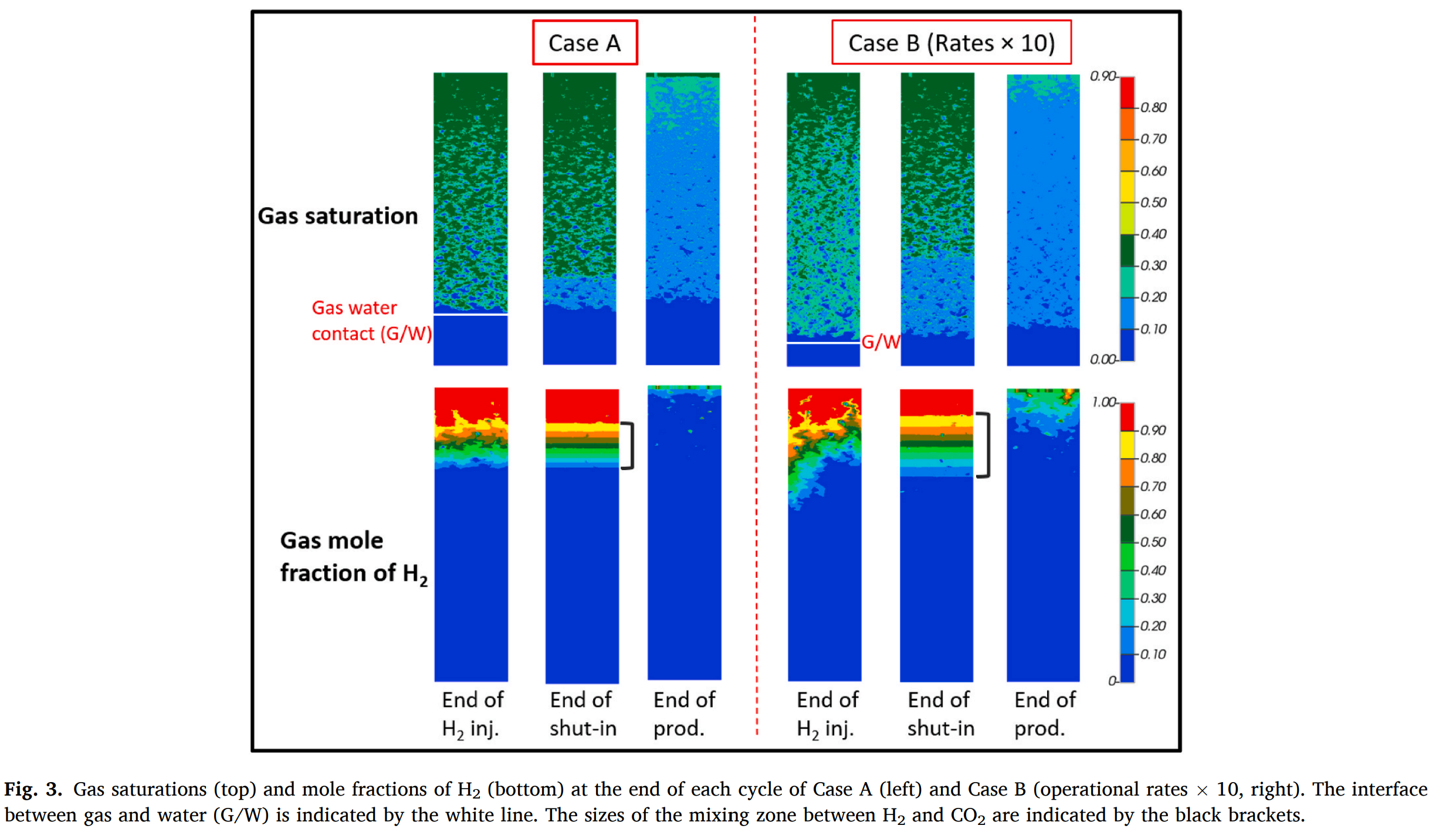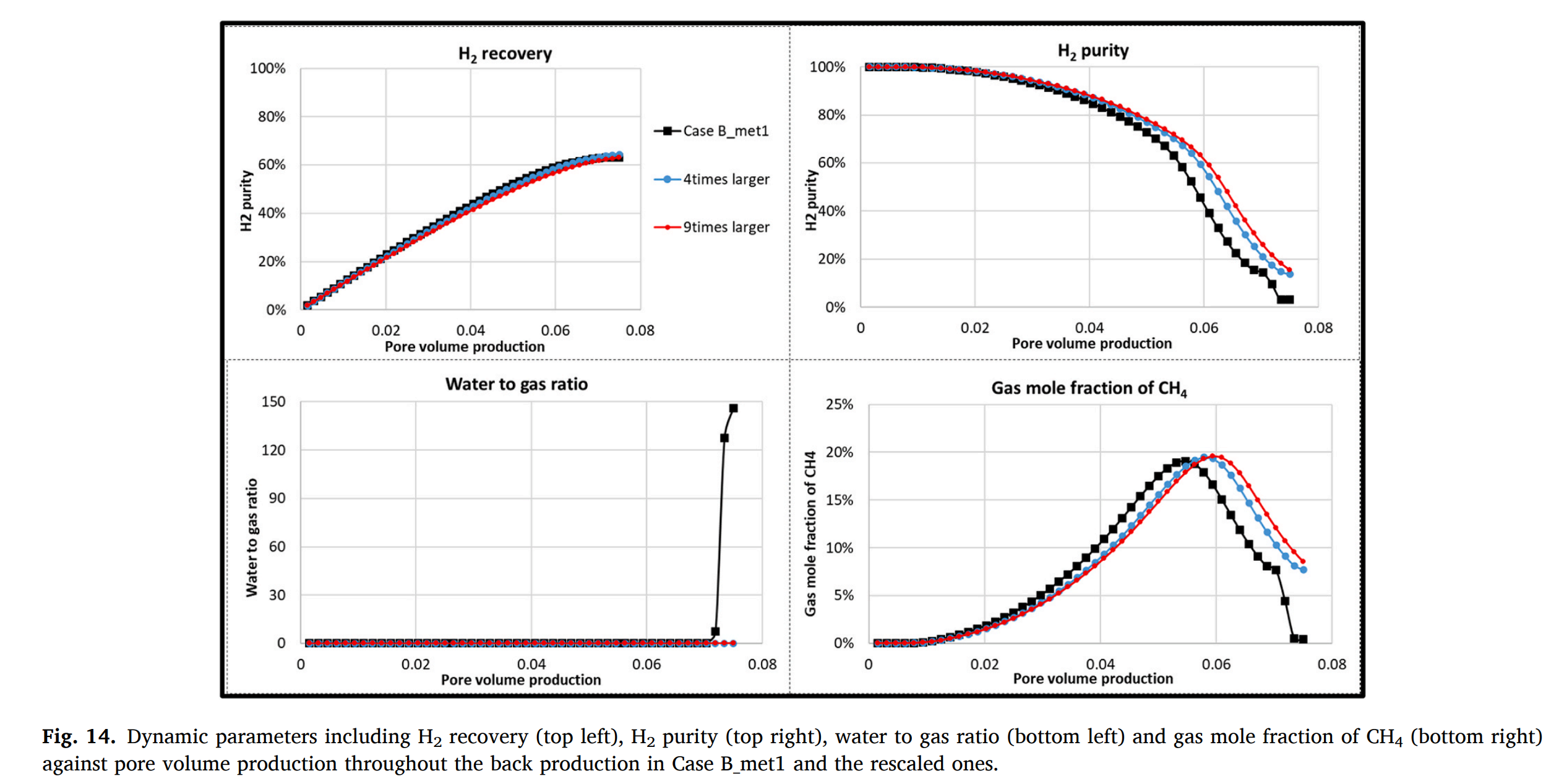Bioreaction coupled flow simulations: Impacts of methanogenesis on seasonal underground hydrogen storage
评估微生物风险对于地质构造中氢储存的可行性至关重要。本工作定量分析了生物甲烷生成对氢储存性能的影响。通过与生物甲烷反应耦合的细尺度流动模拟,分析了其对储存性能的影响。基于文献中报告的速率,甲烷生成可能会轻微降低氢的回收性能,但与气体混合问题相比影响较小。
在本研究配置的系统中,当甲烷生成速率高于1746纳摩尔/小时时,甲烷生成对月(330天)时间尺度的影响变得可观察。假设的甲烷生成速率是Olla油田报告速率的两倍。验证的缩放理论为重力主导情景概括了发现,但在高比率下,由于压力变化导致的属性变化,粘性主导流动会看到复杂性。本研究为筛选氢储存项目提供了“目标属性”(例如,可接受的甲烷生成速率)的定义。
CMG软件应用情况:
在这项研究中,使用了CMG/GEM软件进行全组分模拟,涉及氢气储存过程中的多种流体组分(氢气、二氧化碳和甲烷)。CMG/GEM软件用于执行流体流动函数的输入,包括状态方程(EoS)、两相相对渗透率、毛管压力和气体溶解度。研究中还应用了Arrhenius方程来模拟甲烷生成过程,该方程是一个基于速率常数的经验关系,广泛用于化学反应。通过调整频率因子(F),在单细胞模拟中匹配了文献中报告的反应速率,然后将这些相关速率用于后续的二维数值分析。




ABSTRACT
Assessing microbial risks is key to feasible hydrogen storage in geological formations. This work quantitatively analyses the impacts of bio-methanation on hydrogen storage performance. Fine-scale flow simulations, coupled with the bio-methanation reaction, are presented to analyse its impact on the storage performance. Based on the reported rates in literature, methanogenesis may slightly degrade the recovery performance of hydrogen but is considered minor compared with the issue of gas mixing. The impacts of methanogenesis on a time scale of months (330 days) becomes observable in the system configured here, when the methanation rate is above 1746 nano molality per hour. The assumed methanation rate is two times greater than the rate reported from the Olla filed. Validated scaling theory generalises findings for gravity-dominated scenarios. But viscous-dominated flows see complications from property variations due to pressure changes at high rates. This study provides definitions of “target properties” (e.g., acceptable methanogenesis rates) for screening hydrogen storage projects.
作者单位:
英国赫瑞瓦特大学(Heriot-Watt University)
